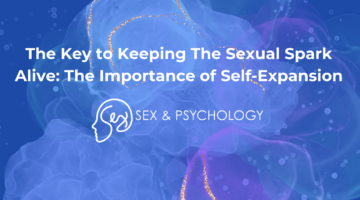Is Erectile Dysfunction Really on the Rise in Young Men?
April 27, 2018 by Justin Lehmiller
In the popular media, it’s easy to find claims of a rising “epidemic” of erectile dysfunction in young men. For example, this article argues that the rate of ED in young men has increased 1000% in the last decade alone—though, problematically, no research is cited to back it up, which makes this a very questionable claim. So what does the science say on this subject? Are erectile difficulties really rising at a dramatic rate in young guys? Let’s take a look.
Before we get started, it’s important to mention that most of the research on ED has focused on middle-aged to older men because the presumption is that they’re the ones most at risk. As a result, younger guys have largely been overlooked, so the data are pretty minimal.
With that said, the only data we’re going to focus on here are the results of large, nationally representative sex surveys because they offer the best source of information when it comes to trying to establish realistic prevalence rates and how they might have changed over time. Data from convenience samples of college students just aren’t reliable enough for these purposes.
As a starting point, consider the National Health and Social Life Survey, which was the first nationally representative sex survey conducted in the United States [1]. The data were collected in 1992 from thousands of Americans aged 18-59. As part of this survey, male participants were asked whether they’d had trouble maintaining or achieving an erection any time in the last year, to which they provided a simple yes/no answer.
It turned out that 7% of men aged 18-29 and 9% of men aged 30-39 said yes. So, in the 1990s, roughly 1 in 10 American men under age 40 were reporting some degree of erectile difficulty. This tells us that erectile problems are fairly common among young men and that this has been going on for quite some time.
Now, let’s flash forward to 2012 and look at data from the NATSAL-3, a nationally representative sex survey from Britain [2]. Male participants in this study were asked whether they’d had trouble getting or keeping an erection for a period of three or more months during the last year. The number of young men who said yes ranged from 7.6-7.9%.
Although these data were collected in different Western countries and the question wording differed, it’s striking how similar the figures are considering that the data were collected 20 years apart. This suggests that perhaps rates of ED aren’t on the rise among young men after all.
While these are the two most comparable datasets on this subject, there’s a problem with both of these studies, which is that they don’t tell us anything about the severity of the difficulties experienced. Having erectile “difficulty” doesn’t necessarily mean that these guys can’t get an erection at all or that they have problems every time and with every partner. Also, we don’t know whether guys who had very mild problems answered these questions consistently (e.g., if it only happened once or you didn’t think it was a big deal, would you still report it as a problem?).
We can partially speak to this issue by looking at data from the first wave of the National Survey of Sexual Health and Behavior (NSSHB), a nationally representative US sex survey conducted in 2009 with thousands of Americans aged 14-94 [3]. As part of this study, male participants were asked whether they’d experienced any erectile difficulties the last time they had sex via a single item with five response options, ranging from “not difficult” to “very difficult.” Obviously, this is a quite different question compared to the other studies because it only focused on a single event (the most recent one in memory) and it was more complex than a simple yes/no answer. The researchers also divided men into slightly different age groups.
What they found was that 11.5% of men aged 18-24, 8.5% of men aged 25-29, and 16.4% of men aged 30-39 reported some level of erectile difficulty. However, very few of these guys reported difficulties that were moderate or severe. The vast majority in each group (7.4%, 6.9%, and 13.8%, respectively) said that their difficulties were mild.
Given the different questions and response options used here, I’d be cautious about concluding that the NSSHB is necessarily registering a rise in ED among young men compared to the aforementioned US study from the 90s. Given that the NSSHB response options allowed for different degrees of severity, it’s likely that this study is detecting more guys who occasionally have mild erectile issues (issues that may not even be significant enough to prompt distress or clinical attention). Also, the NSSHB was bound to produce different figures given that participants only had to think about the most recent time they had sex, as opposed to recalling all sexual experiences over the last year (indeed, thinking only about a single, recent event could make it easier to remember a mild problem that would otherwise be forgotten). For these reasons, the NSSHB data just aren’t directly comparable to the 90s data.
With all of that said, it should be clear that we lack evidence from nationally representative sex surveys to support claims about a massive increase in erectile difficulties among young men. It may be that reports of mild problems are increasing in this group (we need more data to know), but even if this is true, the data don’t suggest anything along the lines of, say, a 1000% increase.
Also, even if rates of erectile difficulties are rising in young guys, we definitely can’t say why. While many like to point to increased access to online porn as the likely culprit, we need to be mindful of the fact that a ton of other things could potentially be playing a role. For example, young people today are much more likely to be using antidepressants than they were in the past, which we know can cause a number of sexual side effects. There may also have been changes in condom use patterns—we know that a lot of guys have erectile difficulties when using condoms, so if guys today are using more condoms, that could translate to more difficulties.
In short, even if ED is on this rise in this group, why is increased access to porn a more plausible explanation than, say, increased antidepressant use?
As always, we need more data—but the take-home message here is to be very wary of claims that there’s a growing epidemic of ED in young men and, further, that online porn is necessarily responsible for it.
Want to learn more about Sex and Psychology? Click here for more from the blog or here to listen to the podcast. Follow Sex and Psychology on Facebook, Twitter (@JustinLehmiller), or Reddit to receive updates. You can also follow Dr. Lehmiller on YouTube and Instagram.
[1] Laumann, E.O., Paik, A., & Rosen, R.C. (1999). Sexual dysfunction in the United States. The Journal of the American Medical Association, 281, 537-544. doi:10.1001/jama.281.6.537
[2] Mitchell, K.R., Mercer, C.H., Ploubidis, G.B., Jones, K.G., Datta, J., Field, N., … & Clifton, S. (2013). Sexual function in Britain: findings from the third National Survey of Sexual Attitudes and Lifestyles (Natsal-3). The Lancet, 382(9907), 1817–1829. doi:10.1016/S0140-6736(13)62366-1
[3] Herbenick, D., Reece, M., Schick, V., Sanders, S. A., Dodge, B., & Fortenberry, J. D. (2010). An event‐level analysis of the sexual characteristics and compositio
n among adults ages 18 to 59: Results from a national probability sample in the United States. Journal of Sexual Medicine, 7(s5), 346-361.
Image Source: 123RF/Brankica Vlaskovic
You Might Also Like:

Dr. Justin Lehmiller
Founder & Owner of Sex and PsychologyDr. Justin Lehmiller is a social psychologist and Research Fellow at The Kinsey Institute. He runs the Sex and Psychology blog and podcast and is author of the popular book Tell Me What You Want. Dr. Lehmiller is an award-winning educator, and a prolific researcher who has published more than 50 academic works.
Read full bio >


